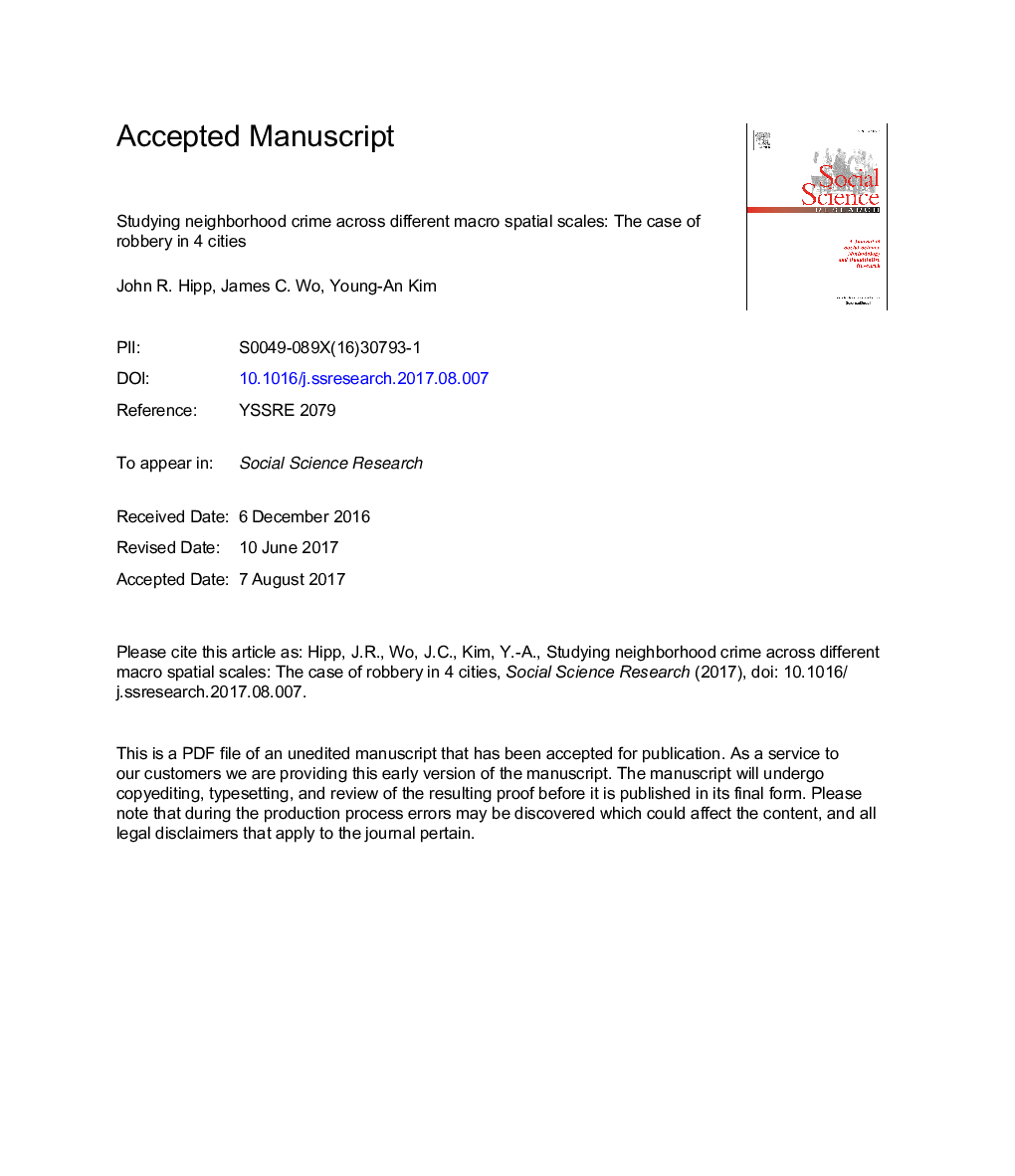| Article ID | Journal | Published Year | Pages | File Type |
|---|---|---|---|---|
| 7338886 | Social Science Research | 2017 | 58 Pages |
Abstract
Whereas there is a burgeoning literature focusing on the spatial distribution of crime events across neighborhoods or micro-geographic units in a specific city, the present study expands this line of research by selecting four cities that vary across two macro-spatial dimensions: population in the micro-environment, and population in the broader macro-environment. We assess the relationship between measures constructed at different spatial scales and robbery rates in blocks in four cities: 1) San Francisco (high in micro- and macro-environment population); 2) Honolulu (high in micro- but low in macro-environment population); 3) Los Angeles (low in micro- but high in macro-environment population); 4) Sacramento (low in micro- and macro-environment population). Whereas the socio-demographic characteristics of residents further than ½ mile away do not impact robbery rates, the number of people up to 2.5 miles away are related to robbery rates, especially in the two cities with smaller micro-environment population, implying a larger spatial scale than is often considered. The results show that coefficient estimates differ somewhat more between cities differing in micro-environment population compared to those differing based on macro-environment population. It is therefore necessary to consider the broader macro-environment even when focusing on the level of crime across neighborhoods or micro-geographic units within an area.
Related Topics
Social Sciences and Humanities
Psychology
Social Psychology
Authors
John R. Hipp, James C. Wo, Young-An Kim,
